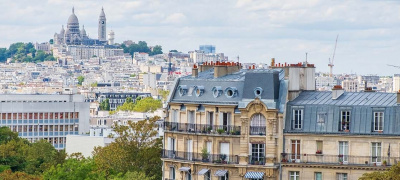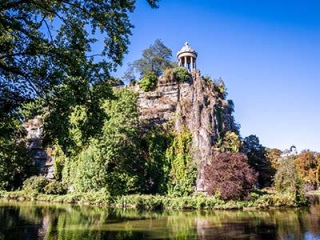Sotheby's International Realty
- 138 Avenue Victor Hugo
- 75116 PARIS, France
- +33 1 40 60 50 00
Sotheby's International Realty
- 50 rue d'Auteuil
- 75016 PARIS, France
- +33 1 56 26 56 55
Sotheby's International Realty
- 82 Avenue de Wagram
- 75017 PARIS, France
- +33 1 46 22 27 27
Sotheby's International Realty
- Place Sainte Foy - 2 Rue de Chézy
- 92200 NEUILLY, France
- +33 1 41 43 06 46
Sotheby's International Realty
- Place Sainte Foy - 2 rue de Chézy
- 92200 NEUILLY, France
- +33 1 41 25 00 00
Sotheby's International Realty
- 37-39 rue de Turenne
- 75003 PARIS, France
- +33 1 48 87 14 41

Paris 19

The 19th arrondissement of Paris, located in the northeastern part of the capital, is a district full of character, rich in history and diversity. Established in 1860 during the annexation of surrounding communes by Paris, this arrondissement is distinguished by two major parks: the Parc des Buttes-Chaumont and the Parc de la Villette. The former, inaugurated in 1867, is famous for its steep terrain, picturesque lake, and the Temple de la Sibylle perched atop an artificial cliff. The Parc de la Villette, on the other hand, is a cultural and scientific hub housing the Cité des Sciences et de l'Industrie and the Philharmonie de Paris. The architecture in the 19th arrondissement is varied, ranging from Haussmannian buildings to modern constructions, with a significant portion of social housing. The Mouzaïa neighborhood, also known as "Little Alsace," is particularly sought after for its charming individual houses and cobbled streets. In terms of real estate, the 19th offers a diverse range of properties, from family apartments to contemporary lofts. Its strengths lie in its friendly atmosphere, cultural richness, and green spaces, making it a pleasant and dynamic place for its residents.
Belleville
Belleville, straddling the 10th, 11th, 19th, and 20th arrondissements of Paris, is an iconic neighborhood that has preserved its popular spirit and cosmopolitan character. Once an independent village until its annexation by Paris in 1860, Belleville has long been a refuge for workers, artists, and immigrant communities. This diversity is still evident today in the vibrant atmosphere of the neighborhood, where different cultures and generations coexist.
The architecture of Belleville is a true patchwork, blending traditional houses, Haussmannian buildings, and modern constructions. This striking contrast gives the area a unique charm, with each street telling a different story. Among the notable landmarks, the Parc de Belleville stands out with its panoramic view of the city and terraced gardens. Rue de Belleville, with its bustling restaurants and markets, is another highlight, offering a glimpse into the daily life and culinary richness of the neighborhood.
In terms of real estate, Belleville offers a variety of properties ranging from studios for young professionals to family apartments. Prices are often more affordable than in central Paris, attracting a diverse population seeking a dynamic and authentic living environment. The former artist studios converted into lofts and renovated buildings reflect the architectural diversity and revitalization of the area.
Belleville's strengths are numerous. In addition to its cultural dynamism with many art galleries, theaters, and community events, the neighborhood benefits from proximity to green spaces like the Canal Saint-Martin and Parc des Buttes-Chaumont. Belleville is also well-served by public transportation, making it easy to travel to other parts of the city.
In summary, Belleville is a neighborhood where tradition and modernity coexist harmoniously. It offers a unique and attractive living environment, providing an authentic immersion into a genuine Paris far from tourist clichés, yet rich in history, culture, and human diversity.
La Villette
La Villette, located in the 19th arrondissement of Paris, is a dynamic and modern neighborhood known for its vast park and cultural institutions. Formerly an industrial area, La Villette was transformed in the 1980s with the creation of the Parc de la Villette, designed by architect Bernard Tschumi. This park, the largest in Paris, is a multifunctional space combining nature, leisure, and culture.
The architecture of La Villette is characterized by its contemporary and innovative structures. The park houses several iconic buildings such as the Cité des Sciences et de l'Industrie, the largest science museum in Europe, and the Philharmonie de Paris, a concert hall with bold lines designed by Jean Nouvel. The Grande Halle de la Villette, a former slaughterhouse converted into an event space, and the Géode, a giant spherical cinema, are also highlights of the area.
Real estate in La Villette is varied, with offerings ranging from modern apartments to lofts converted from former industrial buildings. Prices are attractive compared to other parts of Paris, drawing a young and diverse population, including families, professionals, and students. The proximity to educational and cultural institutions enhances the neighborhood's appeal.
La Villette's strengths are numerous. In addition to its exceptional cultural offerings with festivals, exhibitions, and concerts, the neighborhood provides ample green spaces and sports facilities. The nearby Canal de l'Ourcq, with its bike paths and promenades, offers a pleasant and active living environment. La Villette is also well-served by public transportation, making it easy to travel to central Paris and surrounding suburbs.
In summary, La Villette is a vibrant neighborhood where modernity and culture converge. It is an attractive and dynamic place to live, ideal for those seeking an urban environment rich in activities and opportunities, while enjoying a green and pleasant setting.
Main lanes
The 19th arrondissement of Paris is traversed by several major thoroughfares that structure the neighborhood and facilitate movement. Rue de Belleville, one of the main arteries, is famous for its lively atmosphere, markets, and local shops. Avenue Jean Jaurès, stretching 2.8 kilometers, connects Place de la Bataille-de-Stalingrad to Parc de la Villette, offering an impressive perspective of the park. Boulevard de la Villette, with its numerous restaurants and cafes, is another important road that adds to the neighborhood's appeal. Lastly, Rue de Crimée, which crosses the Bassin de la Villette via the Crimée lifting bridge, is a crucial route for accessing both sides of the Canal de l'Ourcq.
The 19th arrondissement is home to several iconic landmarks that make it a major cultural and recreational center in Paris. Parc des Buttes-Chaumont, with its steep slopes, picturesque lake, and Temple de la Sibylle, is one of the most beloved parks among Parisians. The Cité des Sciences et de l'Industrie, located in Parc de la Villette, is an interactive museum dedicated to science and technology, attracting visitors of all ages. The Philharmonie de Paris, also in Parc de la Villette, is an internationally renowned music center. Finally, the Zénith de Paris, a nearby concert hall, hosts numerous musical events and shows throughout the year.
The 19th arrondissement is distinguished by its many assets that make it a desirable place to live. Its vast green spaces, such as Parc des Buttes-Chaumont and Parc de la Villette, offer peaceful havens of nature in the heart of the city. The neighborhood also boasts a rich cultural life, with renowned institutions like the Cité des Sciences et de l'Industrie, the Philharmonie de Paris, and numerous art galleries. Residents also enjoy a wide variety of shops, markets, and restaurants, reflecting the cultural diversity of the area. Additionally, the 19th arrondissement is well-served by public transportation, with several metro and bus lines facilitating travel to the rest of the capital.
The architecture of the 19th arrondissement is an eclectic mix of styles, reflecting its history and development. Haussmannian buildings stand alongside modern constructions and contemporary designs. In the Mouzaïa neighborhood, also known as "Little Alsace," charming individual houses and cobblestone streets contrast with the denser urban landscape of the rest of the arrondissement. Former industrial buildings, especially around the Canal de l'Ourcq and the Bassin de la Villette, have been rehabilitated into modern apartments, offices, and cultural spaces, showcasing the area's revitalization.
The real estate market in the 19th arrondissement offers a wide variety of properties, suitable for all types of buyers and renters. There are spacious family apartments, studios for young professionals, and lofts converted from former industrial buildings. Property prices are often more affordable than in central Paris, attracting a diverse population seeking a dynamic and authentic living environment. Proximity to green spaces, cultural institutions, and high-quality public amenities further enhances the neighborhood's appeal, making the 19th arrondissement a sought-after residential area for those looking to combine urban living with a high quality of life.




